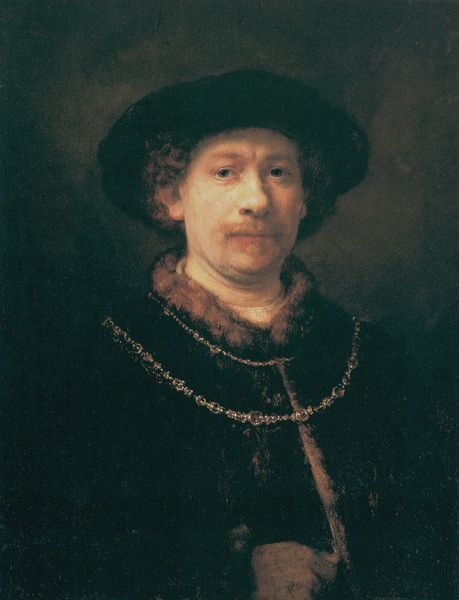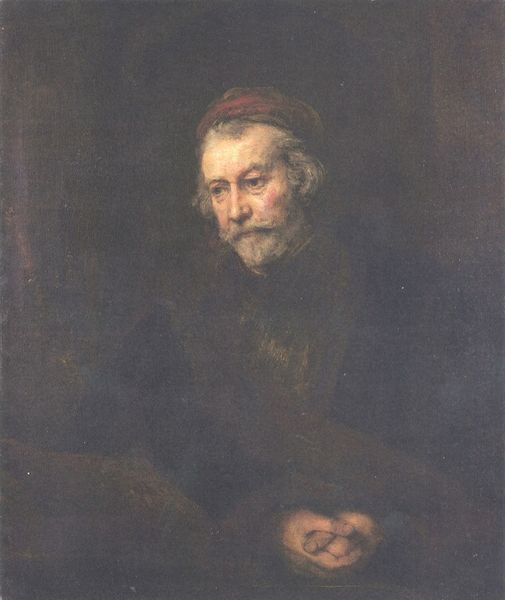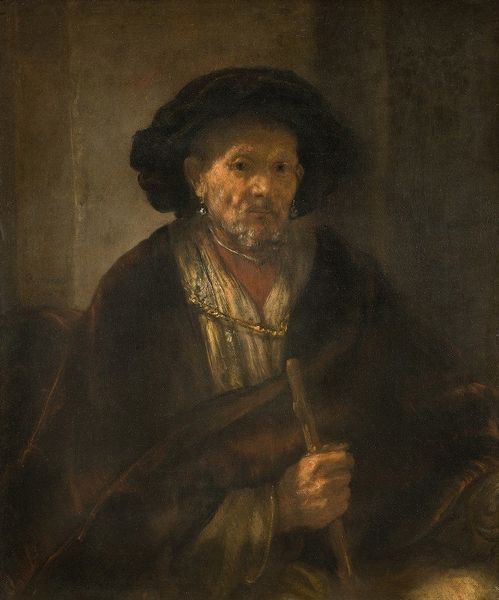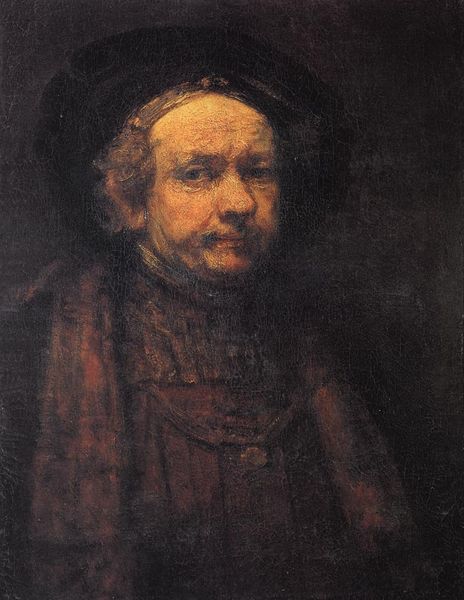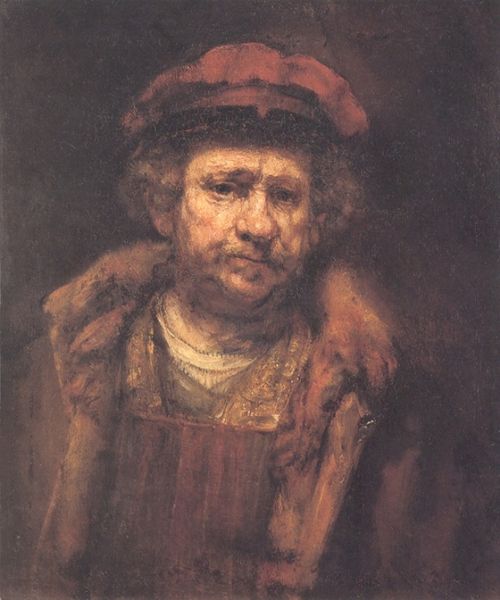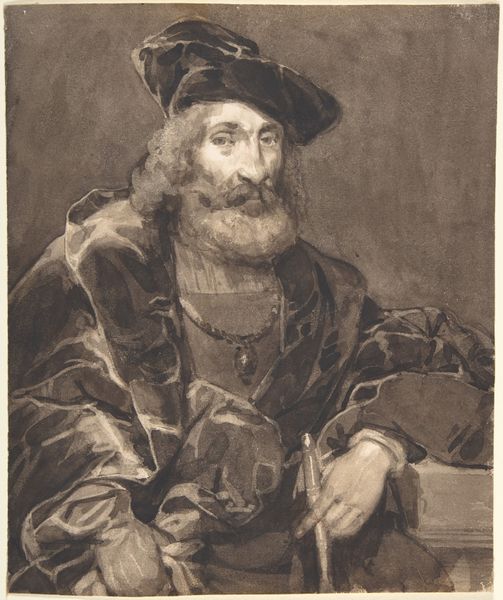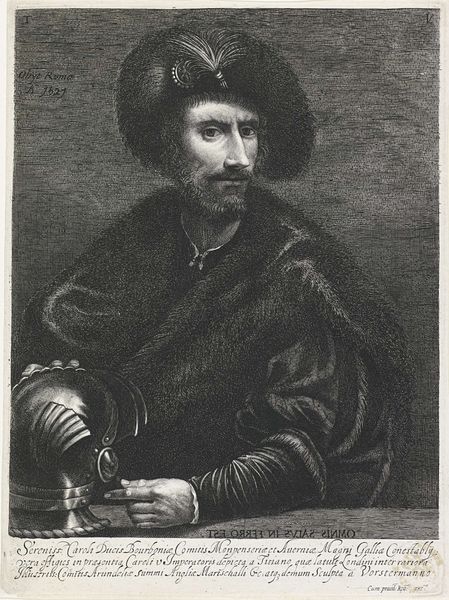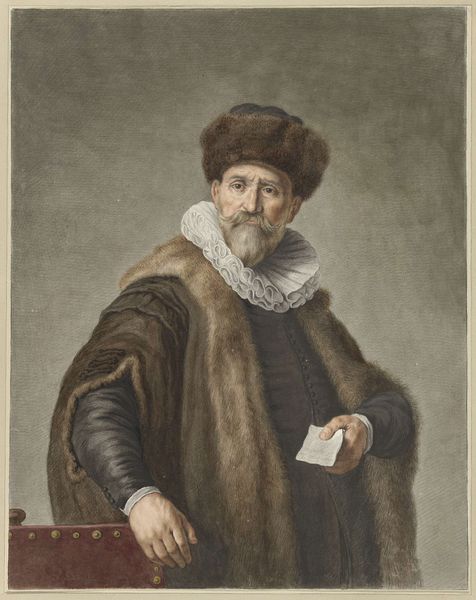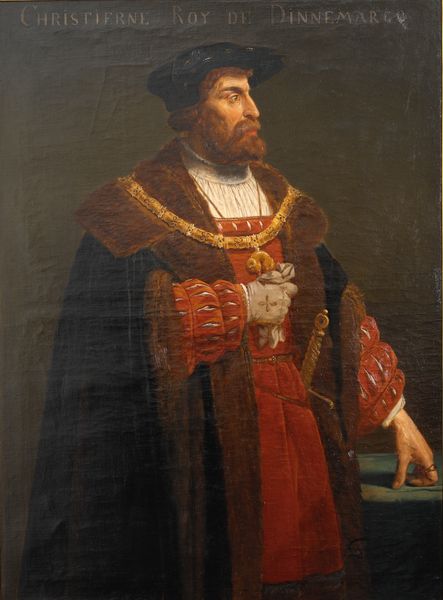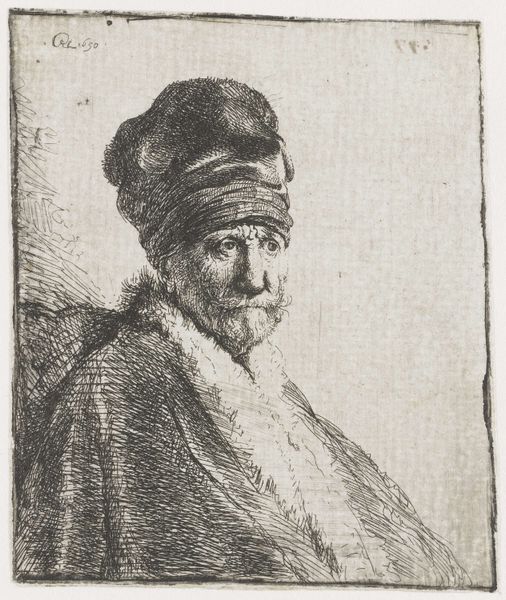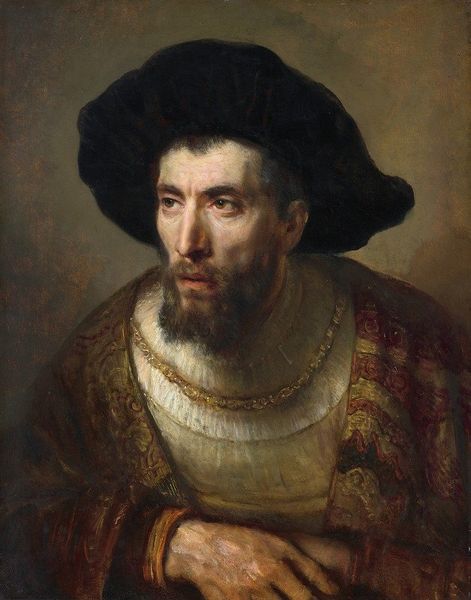
painting, oil-paint
#
portrait
#
baroque
#
dutch-golden-age
#
painting
#
oil-paint
#
oil painting
#
portrait reference
#
underpainting
#
fine art portrait
Dimensions: 108 x 86 cm
Copyright: Public domain
Curator: We’re looking at Rembrandt van Rijn’s "Portrait of an Old Man in Red," completed in 1654. It's currently housed in the Hermitage Museum in St. Petersburg. Editor: He looks… tired. But there's a certain stoicism about him, despite the deep lines etched on his face and that melancholic gaze. Curator: It's a wonderful example of Rembrandt’s later style. The loose brushwork, the emphasis on capturing the sitter's inner character... all hallmarks of the Dutch Golden Age and its evolving attitudes toward portraiture. Editor: Absolutely, but this goes beyond mere representation. You can feel the weight of history, of experience. Who was he? I can't help but project my own assumptions onto this elderly white man with a funny little goatee and fur collar. Wealthy merchant? Local official? Or perhaps someone whose status was being intentionally obscured through Rembrandt’s careful, theatrical presentation? Curator: Interesting point. His clothing suggests a certain affluence, that luxurious red fabric for instance. This was a period where the Dutch merchant class held considerable power. Rembrandt himself wasn't immune to the allure, or the demands, of patronage. So, in looking at that theatrical presentation as you call it, it is crucial to understand the nuances of status and aspiration inherent to Rembrandt's practice and historical moment. Editor: Which is why the averted gaze matters all the more. Does he look down in shame? Humility? The mystery feels deliberate, part of Rembrandt's larger engagement with human complexities during a time when European empires were expanding into colonized countries like Brazil and South Africa and their exploitative endeavors were dramatically impacting global trade and wealth distribution. Was the depicted elder complicit or concerned by his entanglement with these atrocities? Curator: I see your point about accountability in empire building, although that reading projects our contemporary values onto a historical subject. It's interesting that Rembrandt chose an older model – old age was often seen as a source of wisdom. It perhaps elevates the sitter beyond simple materialism to a symbol of reflection on society itself. Editor: Maybe, but those symbols are always open to interpretation, aren't they? To me, he stands as a haunting reminder of history's silences, and the moral reckonings we can't avoid. Curator: Indeed. This encounter invites us to bring the past into a dynamic dialogue with the present. Editor: It’s a poignant moment, captured with raw emotion that speaks to our shared human journey.
Comments
No comments
Be the first to comment and join the conversation on the ultimate creative platform.
